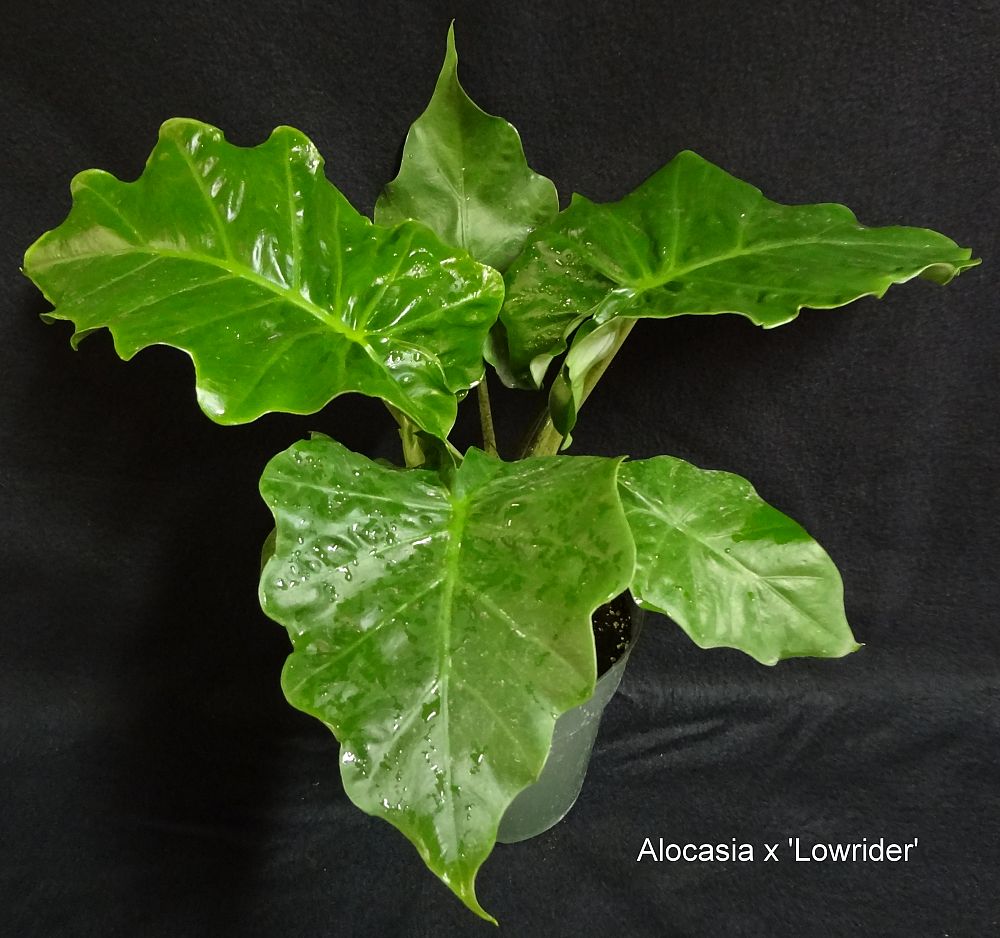Low Rider Alocasia
If you're looking for a unique and stunning plant to add to your collection, look no further than the low rider alocasia. This beautiful plant has striking foliage and a distinctive shape that is sure to make a statement in any room. But, as with any plant, there are some things you should know before you bring a low rider alocasia home.
Pain Points
While low rider alocasia is a beautiful and interesting plant, it can be a bit finicky to care for. It requires specific conditions in terms of light and water, and if those conditions aren't met, the plant can suffer. Additionally, the low rider alocasia can be toxic if ingested, so it's important to keep it out of reach of children and pets.
Target of Low Rider Alocasia
The low rider alocasia is an ideal plant for those who are looking for something unique and visually striking. It's an eye-catching addition to any plant collection and is sure to impress visitors. However, it's important to keep in mind the care requirements and toxicity of the plant before bringing it home.
Summary of Main Points
In summary, the low rider alocasia is a beautiful and unusual plant that is sure to make a statement in your home. However, it requires specific care conditions and can be toxic if ingested. If you're willing to provide the proper care for this plant, it's an ideal addition to any collection.
My Experience with Low Rider Alocasia
When I first saw a low rider alocasia, I was immediately drawn to its unique shape and striking foliage. I knew I had to have one for my collection. After bringing it home, I quickly learned that this plant requires quite a bit of attention and care. I had to adjust the light and water conditions in my home to make sure the plant was thriving. However, all the effort was worth it when I saw the plant flourishing and displaying its beautiful leaves.

How to Care for Low Rider Alocasia
The low rider alocasia requires bright, indirect light to thrive. It's important to keep the soil evenly moist, but not waterlogged, and to mist the leaves regularly to provide some humidity. The plant also benefits from being fertilized regularly during the growing season. It's important to keep the plant out of reach of children and pets, as it can be toxic if ingested.

The Importance of Light
One of the most important factors in caring for the low rider alocasia is providing the right amount of light. This plant requires bright, indirect light, but it should not be exposed to direct sunlight. If the plant is getting too much sun, its leaves can become scorched or can turn yellow and fall off. If the plant is not getting enough light, its growth can slow down and its leaves may not develop fully.

Toxicity Concerns
It's important to keep in mind that the low rider alocasia is toxic if ingested. The plant contains oxalic acid, which can cause irritation and swelling in the mouth and throat. If you have young children or pets in your home, it's best to keep this plant out of reach or to choose a different plant that is not toxic.

Question and Answer
Q: Can low rider alocasia be grown outside?
A: While low rider alocasia is primarily an indoor plant, it can be grown outside in certain conditions. It requires warm temperatures and high humidity, so it's best suited to outdoor environments that mimic tropical conditions.
Q: How often should I water my low rider alocasia?
A: The low rider alocasia requires even moisture, but not waterlogging. It's important to let the top inch or so of soil dry out before watering again. During the growing season, the plant may need to be watered more frequently, while in the winter months, it may need less water.
Q: Can low rider alocasia be propagated?
A: Yes, low rider alocasia can be propagated through division. Simply remove the plant from its pot, gently shake off the excess soil, and carefully separate the root ball into several smaller sections. Re-pot each section into a separate container, water it thoroughly, and continue to care for it as you would a mature plant.
Q: What should I do if my low rider alocasia starts to droop or wilt?
A: Drooping or wilting leaves can be a sign that the plant is not getting enough water. Check the soil for dryness, and water the plant accordingly. If the plant is overwatered, its leaves can also start to droop. In this case, allow the soil to dry out before watering again.
Conclusion of Low Rider Alocasia
Overall, the low rider alocasia is a stunning and unique plant that can add a touch of visual interest to any home. While it requires specific care conditions and can be toxic if ingested, if you're willing to put in the effort, this plant is definitely worth the trouble. From proper light and water conditions to division and propagation, there are many ways to care for and enjoy this beautiful plant.
Gallery
Alocasia Low Rider™ - Je Jardine

Photo Credit by: bing.com / alocasia seulement texte
Plant Detail – Willoway Nurseries, Inc.

Photo Credit by: bing.com / rider alocasia low plant willowaynurseries
Alocasia Low Rider – Brian's Botanicals

Photo Credit by: bing.com / alocasia shields regal briansbotanicals
6 Alocasia 'Low Rider' | Etsy

Photo Credit by: bing.com / alocasia
Alocasia 'Low Rider', Elephant Ear | PlantVine

Photo Credit by: bing.com / alocasia rider low elephant ear plants plantvine gallon